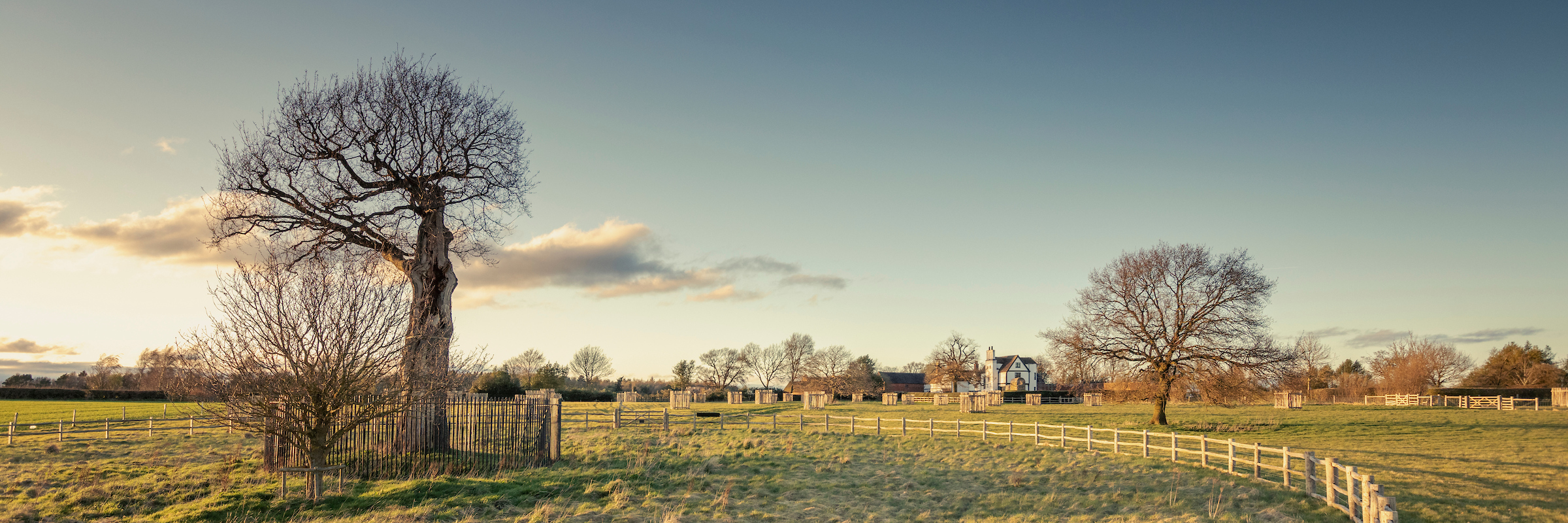From acorn to oak – the famous Civil War gem that’s re-opened to the public
England’s historic treasures are begging to be discovered. Here we take a look at the newly revamped Boscobel House in Shropshire
Take the chance to fully immerse yourself in the atmosphere of this oft-forgotten epoch in English history by taking a guided tour through Boscobel House, the English Heritage property whose interiors have reopened to the public after a £950,000 refresh.
The year is 1651. Oliver Cromwell’s New Model Army has delivered a crushing blow to Charles II’s Royalists at the Battle of Worcester, and the English Civil War has been decided. With Cromwell’s Parliamentarians swarming through the countryside, the Merry Monarch is forced to flee to Boscobel House in Shropshire.
Built as a hunting lodge by John Gifford on the grounds of White Ladies Priory, the cosy manor is now leased by William Careless, who offers the king refuge in the attic.

A view of the English Heritage managed Boscobel House where King Charles II famously hid while being pursued by Oliver Cromwell’s soldiers following defeat at Worcester
Charles paces around the house until one fateful evening when – with the Parliamentarians drawing closer – he and Careless are forced to abandon the house and take refuge in a nearby oak tree. Here they wait out the night, surrounded by the footsteps of their would-be captors, until the next morning.
Charles would later make good his escape to the Netherlands, thus cementing Boscobel House and the so-called “Royal Oak” into the annals of English history (and pub names) forevermore.

The garden at Boscobel House has been re-planted in original 17th century style
A short drive from the M6, the Civil War gem is nestled in the heart of the picturesque Shropshire countryside. New additions include the introduction of rare breed animals like Tamworth pigs and Ryeland sheep to a tranquil animal farm, a play area to keep the kids busy, and a revamp of the cutesy tea room. The woodland once surrounding the Royal Oak has also been replanted using saplings propagated from the original tree.

A view of the interior of Boscobel House, showing some of the original and ornate furniture in the living room where King Charles II once stayed, while fleeing from England
The house’s timber-framed exterior and oak-panelled interior have not only been carefully preserved, but augmented with immersive technology that brings the story of Charles’s escape to life like never before. Even the furniture, which had originally been sold, is being meticulously traced and restored – a key piece is an original copy of Thomas Blount’s book Boscobel, a contemporary account of the king’s escape.
And of course, the pièce de resistance is undoubtedly the Royal Oak (or rather, the grandchild of the original), which looms over the grounds and offers visitors a first-person glance at one of the most striking artefacts from the English Civil War.
But wait. What, you ask, became of Charles II? Well, after nine oppressive years under Cromwell, the English finally invited him home to resume his place on the throne, ending a dark age and starting a brighter chapter in history.
How to plan your trip
Entrance costs £11 per adult, £6.60 per child or £28.60 for a family of four. English Heritage members go free.
The Press Association
Latest posts by The Press Association (see all)
- 5 new books to read this week - November 23, 2024
- 3 easy Mary Berry recipes to make this season - November 22, 2024
- In Pictures: Party stalwart kept New Labour in touch with traditional supporters - November 21, 2024
- 6 easy indoor exercises to try this winter – and why they are good for you - November 19, 2024
- Martin Clunes: I can’t afford to retire – I’ve got too many horses - November 19, 2024





















